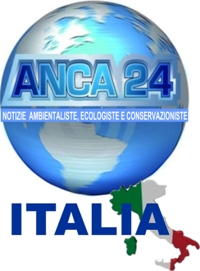 According to Eduardo Sierra weather specialist “La Niña enters its decisive stage.” During the early part of spring, the intensity of “La Niña” was moderated by the persistence of a large bulb with warm water, located in the Atlantic, which acts as a compensating factor, “improving the supply of moisture to the interior of the continent South American. ”
According to Eduardo Sierra weather specialist “La Niña enters its decisive stage.” During the early part of spring, the intensity of “La Niña” was moderated by the persistence of a large bulb with warm water, located in the Atlantic, which acts as a compensating factor, “improving the supply of moisture to the interior of the continent South American. ”
“As a result, rains in October and the first half of November were abundant, allowing a good introduction and starting of the summer crops, creating a sense of optimism among producers and technicians,” said Sierra.
But, as is normal in most episodes of “La Niña”, rainfall in the second half of November and December most were small, “being accompanied by strong heat, which caused a high evaporation, consuming the moisture reserves in most of the national agricultural area. ”
“These developments revived fears that could be repeated a negative impact as recorded in the 2008/2009 marketing year, generating a sense of alarm in much of the Argentine agricultural sector”, said the expert.
However, he reiterated that “this trend is repeated in most of the episodes of La Niña, making the summer begins with the soil devoid of moisture, which makes summer crops in a situation of extreme dependency on rain January and February. ”
In most episodes of “La Niña”, from mid-January precipitation begin to occur, which replenish soil moisture, “allowing lots of crops to recover and enters a productive outcome which, although not usually reached a record, is sufficient to obtain an adequate return, “he said.
Day after day, the drought that began in December extends and deteriorates the crops. The field corn growers risk losing 60% of production, because the harvest is played this month, while soybeans have more room a few weeks, until February, awaiting the longed rains.
The worst conditions occur in the southern province of Cordoba. In the province of Buenos Aires, beat in the production of northern, central and west, although the soil conditions improve closer to the Atlantic Coast. At the southern end of Santa Fe and irreversible losses are corn crop.
The lack of rain not only affects the crops but also to animals. From the Argentina Land Federation (FAA in spanish) warned that thousands of animals are killed because the groundwater is not back together and do not have to drink water in the region north of Santa Fe.
Similarly, “seems to be producing an accentuation of the thermal regime, showing a marked alternation between prolonged warm periods with very high temperatures, which cause heavy consumption of humidity, and short but very strong eruptions of cold currents that produce rain perhaps very late.
Gustavo Carrasquel | ANCA 24






